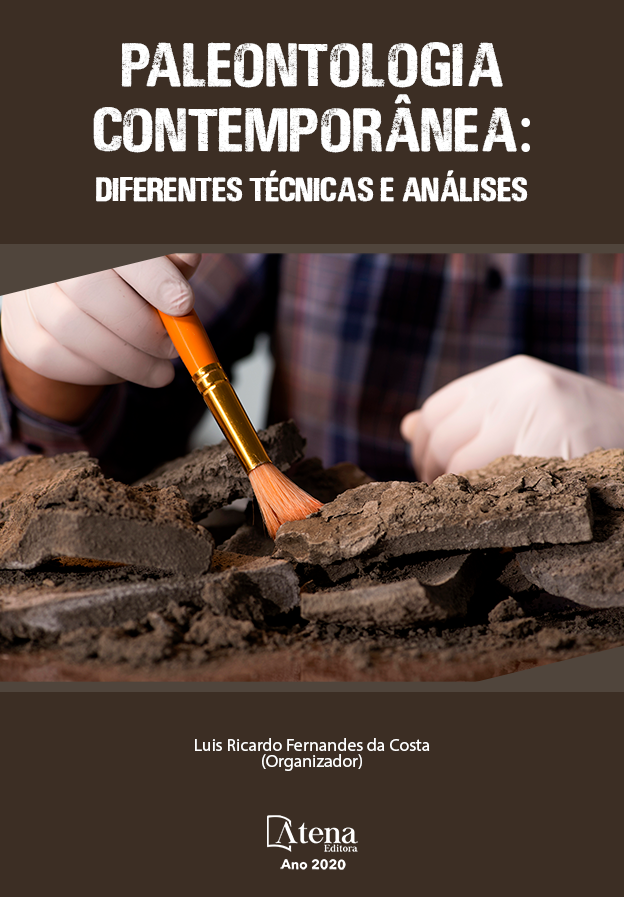
PERCEPTIONS ON PALEONTOLOGICAL HERITAGE AND PLACE-BASED EDUCATION IN GEOCIENCES
O ensino de paleontologia no Brasil iniciou o ensino patrimonial em paleontologia, com o intuito de despertar ações protetoras ao patrimônio paleontológico. Dessa forma, buscamos entender como os fósseis e pedreiras são percebidos pelos estudantes que vivem em seus arredores. Participaram desta pesquisa estudantes da Educação de Jovens e Adultos da escola Francisco Rodrigues do Nascimento, localizada no assentamento Mocambo, zona rural de José de Freitas, Piauí. Os alunos responderam a um questionário sobre fósseis e a sobre a pedreira localizada em sua comunidade. Essas pedras estão por aqui? 70% dos estudantes disseram que era possível encontrá-los perto de suas casas, 20% não sabiam responder e 10% disseram que foram encontrados na água ou na barragem. O que são? As respostas obtidas estão organizadas em 10%, dizendo que são pedras antigas, 5% dizem que são pedras que usam no banheiro da casa e 85% desses alunos não sabiam responder. Para que servem essas rochas? 80% não sabiam responder, 5% disseram que eram usados para fins de estudo, 5% disseram que foram usados para construir a fundação e 6% disseram que eram bons para retificar facas. Entre as últimas perguntas, perguntamos se eles sabiam como essas rochas se formavam, onde 95% não sabiam responder e 5% atribuídos a um processo misterioso ou divino. Na interpretação dos dados, sugerimos a organização das percepções dos alunos em três visões: 1) renúncia, 2) reconhecimento e 3) proteção, essas visões devem ser identificadas para construir uma metodologia de ensino consistente com a realidade dos alunos, principalmente na qual refere-se ao conhecimento geocientífico, para que o ensino seja eficaz e contextualizado, levando a um processo de significância do patrimônio paleontológico.
PERCEPTIONS ON PALEONTOLOGICAL HERITAGE AND PLACE-BASED EDUCATION IN GEOCIENCES
-
DOI: 10.22533/at.ed.0092018092
-
Palavras-chave: Ensino Patrimonial; Paleoinvertebrados; Fauna Carbonífera; Place-based em Geociências.
-
Keywords: Heritage teaching; Paleoinvertebrates; Carboniferous fauna; Place-based in Geociences.
-
Abstract:
The teaching of paleontology in Brazil, inaugurates the patrimonial teaching in paleontology, that aims to awaken protective actions to the paleontological heritage. In this way we seek to understand how the fossils and quarries are perceived by the students living in their surroundings. Participated of this research students of the Education of Young and Adults of the Francisco Rodrigues do Nascimento school, located in the settlement Mocambo, rural area of José de Freitas, Piauí. The students answered a questionnaire about fossils and the quarry located in their community. Are these stones around here? 70% of the students said it was possible to find them near their homes, 20% did not know how to respond and 10% said they were found in the water or dam. What are? The answers obtained are organized in 10% saying that they are old stones, 5% say they are rocks they use in the bathroom of home and 85% of these students did not know to answer. What are these rocks for? 80% did not know how to respond, 5% said they were used for study purposes, 5% said they were used to build the foundation, and 6% said they were good for grind knife. Among the last questions we asked them if they knew how those rocks formed, where 95% did not know how to respond and 5% attributed to a mysterious or divine process. In interpreting the data, we suggest the organization of students 'perceptions in three visions: 1) resignation, 2) recognition and 3) protection, these visions must be identified to build a teaching methodology consistent with the students' reality, especially in the which refers to the geoscientific knowledge, so that the teaching is effective and contextualized leading to a process of significance of the paleontological heritage.
-
Número de páginas: 15
- Érico Rodrigues Gomes
- Jairo Gabriel da Silva Nascimento


